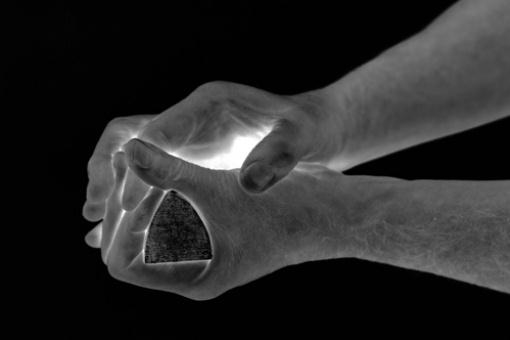Lens-Based Sculpture. The Transformation of Sculpture through Photography
The camera serves as sculptureãs primary tool, as a sketchbook and facilitator for spatial and structural representation in mass and form.
Along with works by Umberto Boccioni, Marcel Duchamp, and Raymond Duchamp-Villon that mark the point of departure for "Lens-Based Sculpture", works created since the 1960s form the core of the exhibition. The exhibits range from hyperrealistic to immaterial sculpture, from sculptural spatial installations to fictitious sculpture, from performative sculpture to preserving traces and to photomedia investigations in the form of sculptural apparatus. Works by John Chamberlain, Tony Cragg, Valie Export, Gilbert & George, Duane Hanson, Rebecca Horn, Joan Jonas, Edmund Kuppel, Ron Mueck, Bruce Nauman, Giuseppe Penone, Roman Signer, Kiki Smith, and other artists show the degree to which photography and film have expanded sculptural work in the direction of new experimental and social contexts.
In "Lens-Based Sculpture", curated by Bogomir Ecker, Raimund Kummer, Friedemann Malsch, and Herbert Molderings, artists and art scholars jointly develop unaccustomed forms of presentation. Thus, Marcel Duchampãs Porte Gradiva (1937) is shown in its original form ã as a traversable doorway. The sculptors Bogomir Ecker and Raimund Kummer also integrate two conceptual spaces: like an archive, densely and multimedially stocked, they open up additional insights into the complex artistic research on the phenomena of "Lens-Based Sculpture".

Recommended for you
The camera serves as sculptureãs primary tool, as a sketchbook and facilitator for spatial and structural representation in mass and form.
Along with works by Umberto Boccioni, Marcel Duchamp, and Raymond Duchamp-Villon that mark the point of departure for "Lens-Based Sculpture", works created since the 1960s form the core of the exhibition. The exhibits range from hyperrealistic to immaterial sculpture, from sculptural spatial installations to fictitious sculpture, from performative sculpture to preserving traces and to photomedia investigations in the form of sculptural apparatus. Works by John Chamberlain, Tony Cragg, Valie Export, Gilbert & George, Duane Hanson, Rebecca Horn, Joan Jonas, Edmund Kuppel, Ron Mueck, Bruce Nauman, Giuseppe Penone, Roman Signer, Kiki Smith, and other artists show the degree to which photography and film have expanded sculptural work in the direction of new experimental and social contexts.
In "Lens-Based Sculpture", curated by Bogomir Ecker, Raimund Kummer, Friedemann Malsch, and Herbert Molderings, artists and art scholars jointly develop unaccustomed forms of presentation. Thus, Marcel Duchampãs Porte Gradiva (1937) is shown in its original form ã as a traversable doorway. The sculptors Bogomir Ecker and Raimund Kummer also integrate two conceptual spaces: like an archive, densely and multimedially stocked, they open up additional insights into the complex artistic research on the phenomena of "Lens-Based Sculpture".
















